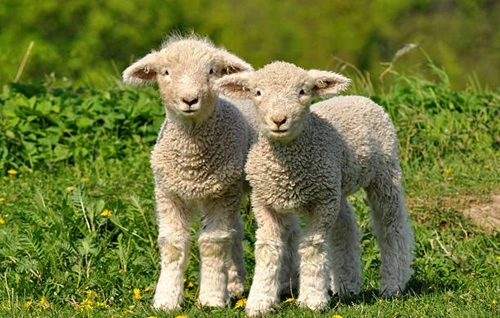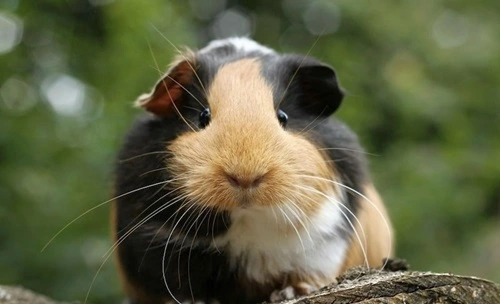Lambs are more than just adorable animals that playfully bounce around in fields. They’re integral to agricultural practices, hold cultural significance worldwide, and contribute to a range of products that people use every day. But there’s so much more to these young sheep than meets the eye. Here are over 10 interesting facts about lambs that highlight their unique characteristics, behaviors, and roles in different cultures.

1. Lambs Are Baby Sheep
The term “lamb” refers to a young sheep, typically under a year old. Once they reach a year, they’re usually referred to as sheep, and mature males are called rams while females are called ewes. Lambs are often known for their playful nature and are recognizable by their small size and soft, fluffy wool. They’re born with the natural instincts to bond closely with their mothers, a behavior that helps them survive in the wild.
2. Lambs Recognize Their Mother’s Voice
Lambs develop a strong bond with their mothers, and part of this connection comes from sound. Lambs can recognize their mother’s bleat, or vocal call, shortly after birth, and ewes can identify their lambs by their cries as well. This auditory connection is essential, especially when lambs are born in flocks. By recognizing their mother’s voice, lambs can quickly reunite with her if they become separated, which is crucial for their protection and feeding.
3. Spring is Lambing Season
Spring is when lambing season typically occurs, as the warmer weather and abundance of fresh grass create ideal conditions for lambs to be born and grow. In farming communities, spring lambing season is a busy time when many lambs are born within a short period. Watching lambs bounce and play in the fields is a classic sign of spring, symbolizing new beginnings and growth.
4. Lambs Have a Unique Play Behavior Known as “Frolicking”
One of the most delightful behaviors of lambs is called “frolicking.” Frolicking is when lambs hop, jump, and playfully run around, sometimes seemingly for no reason. This behavior is a form of play that helps lambs develop their muscles, coordination, and social skills. Frolicking is essential for lambs’ physical and mental development, as it prepares them for adulthood by building strength and enhancing their natural instincts.
5. Lambs are Herbivores with a Special Digestive System
Like other ruminants, lambs are herbivores and rely on a diet of grasses and other plants. They have a unique digestive system that allows them to break down tough plant material through a process called fermentation. Lambs, like adult sheep, have a four-chambered stomach that includes the rumen, reticulum, omasum, and abomasum. This complex system enables them to efficiently extract nutrients from fibrous plants that many other animals cannot digest.
6. Lamb Wool is Incredibly Soft and Valuable
The wool from lambs, particularly their first shearing, is incredibly soft and prized for its fineness. Known as “lambswool,” it is often used in making high-quality clothing and blankets because of its soft, lightweight, and hypoallergenic qualities. Unlike wool from adult sheep, lambswool tends to be finer, smoother, and less itchy, making it ideal for garments worn next to the skin. The demand for lambswool has supported the sheep farming industry for centuries.
7. Lambs Are Born with Tails – But Not All Keep Them
Lambs are born with tails, but in some cases, their tails are removed in a process called docking. Docking is commonly done in commercial sheep farming for hygiene and health reasons, as a shorter tail reduces the risk of infection from flystrike, a condition where flies lay eggs in the wool. Although tail docking is controversial, many farmers view it as a preventive measure to promote the health of their flocks.
8. Lambs Have Excellent Peripheral Vision
Lambs, like adult sheep, have rectangular pupils, giving them excellent peripheral vision. This allows them to see nearly 270 to 320 degrees around them without turning their heads, which is helpful for spotting predators. However, they have poor depth perception and can struggle with judging distances. This impressive field of vision is an adaptation that has helped sheep survive in the wild by detecting threats from all directions.
9. Lambs and Sheep Are Known for Their Strong Flock Mentality
Lambs naturally stick close to their mothers and other members of the flock, a behavior that continues into adulthood. This flocking instinct helps protect lambs from predators, as there is safety in numbers. Lambs that stray too far from the flock are more vulnerable, so they learn from a young age to stay close to their group. This flocking behavior makes managing sheep easier for farmers, as the animals instinctively move together.
10. Lambs Have Been Domesticated for Thousands of Years
Lambs and sheep were among the first animals to be domesticated by humans, with evidence of domesticated sheep dating back more than 10,000 years in ancient Mesopotamia. Early humans relied on sheep for meat, milk, and wool, making them essential for survival. Today, lambs are still raised for these purposes, though the breeds and farming practices have evolved significantly over time to improve wool quality, meat yield, and animal welfare.
11. Lamb Meat is a Popular Dish Around the World
Lamb meat is widely consumed globally and is a staple in various cuisines, particularly in the Middle East, Mediterranean, and parts of Europe and Asia. Lamb is a key ingredient in dishes like Greek lamb souvlaki, Middle Eastern shawarma, and Indian lamb curry. Lamb meat is generally tender, with a rich flavor that pairs well with herbs and spices. While lamb is less common in American diets, it is a valued culinary choice in many cultures.
12. Lambs Play a Role in Symbolism and Religion
Lambs hold a special place in various religious and cultural traditions. In Christianity, the lamb symbolizes purity, innocence, and sacrifice and is often associated with Jesus Christ, known as the “Lamb of God.” In Judaism, lamb is traditionally eaten during Passover, symbolizing liberation and sacrifice. These symbolic associations give lambs a revered place in many cultural celebrations, making them more than just livestock.
13. Certain Breeds of Lambs are Known for Their Colorful Wool
While most lambs are born with white or light-colored wool, some breeds, like the Jacob sheep and Navajo-Churro sheep, produce lambs with unique color patterns. These lambs can be born with black, brown, or spotted wool, which remains throughout their lives. Colorful wool can make lambs of certain breeds highly desirable for specialty wool markets and traditional crafts, where natural colors add beauty and value to textile products.
14. Lambing Can Be a Complicated Process for Farmers
Lambing, or the birthing of lambs, can be a challenging time for farmers, requiring careful management and monitoring. Ewes often give birth to twins, and sometimes triplets, making lambing season especially busy. Farmers must ensure lambs are healthy, feed well, and stay warm, as newborn lambs are particularly vulnerable to the cold. In some cases, farmers may need to assist with difficult births or hand-rear orphaned lambs, adding to the complexities of lambing season.
15. Some Lambs Become “Bottle Babies”
When lambs are orphaned or unable to nurse from their mother, they may become “bottle babies,” hand-fed by farmers. Bottle-feeding lambs requires a lot of time and dedication, as they need to be fed frequently and monitored closely. Farmers often develop a special bond with bottle-fed lambs, as these lambs can be more accustomed to human interaction. Bottle-fed lambs sometimes grow up to be more social and friendly, making them favorites on farms.
Lambs are more than just cute animals; they represent resilience, tradition, and agricultural heritage. From their close bonds with their mothers to their playful nature and role in human culture, lambs bring a unique charm to farms and a special place in our hearts. Whether they’re frolicking in the fields, providing wool for textiles, or playing an important role in religious celebrations, lambs continue to captivate and contribute to our lives in meaningful ways. Each of these fascinating facts about lambs reveals why they are such cherished animals worldwide.



